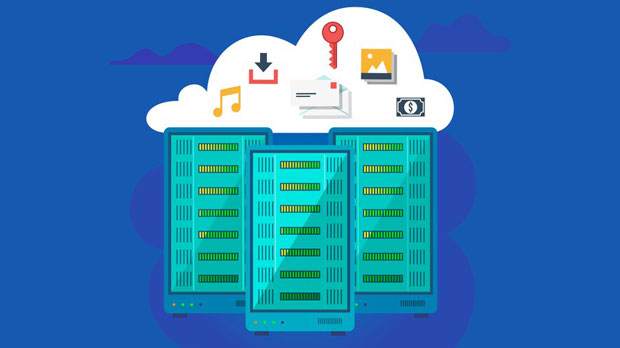When it comes to using proxies, especially for residential purposes, there is a notable difference between cheap residential proxies and premium proxies. These two types of proxies cater to different user needs, ranging from budget-conscious individuals to businesses requiring high-quality, reliable services. The core differences lie in performance, security, reliability, and customer support. In this article, we will delve into the nuances of both, providing a detailed comparison that will help users choose the best proxy for their specific requirements. 1. Definition and Basic CharacteristicsResidential proxies are IP addresses provided by Internet Service Providers (ISPs) to homeowners. These proxies are seen as legitimate and are used to mask the real IP address, providing anonymity and security for users. The term "cheapest residential proxies" typically refers to low-cost services that aim to offer basic proxy functionalities, often without premium features like high-speed connections or top-tier security.On the other hand, premium proxies are usually more expensive and are known for their superior quality. Premium proxies often offer a high level of performance, reliability, and customer support. They are designed to meet the needs of businesses or individuals who require higher speed, better anonymity, and robust security features. Premium proxies are often used for more demanding tasks, such as data scraping, accessing geo-restricted content, or protecting sensitive data.2. Performance and SpeedOne of the most significant differences between cheap residential proxies and premium proxies is the performance and speed. Cheap residential proxies often suffer from slower speeds and can be unreliable, especially when multiple users are accessing the same proxy simultaneously. The bandwidth available on these proxies is typically limited, which can result in latency and slow response times.In contrast, premium proxies are built to provide faster speeds with a higher level of consistency. Premium services often come with dedicated bandwidth, ensuring minimal delays and faster browsing or data extraction capabilities. This makes them an ideal choice for tasks that require speed and reliability, such as large-scale data scraping, social media management, or e-commerce tracking.3. Anonymity and IP Pool SizeAnonymity is another critical factor to consider when choosing between cheap and premium residential proxies. Cheap residential proxies may provide a large pool of IPs, but these IPs can sometimes be flagged or blacklisted due to improper usage or association with suspicious activities. This means that the proxies may not be as anonymous or secure as premium proxies.Premium proxies, however, are generally more reliable in terms of anonymity. They often come with a larger and more diverse pool of residential IP addresses, which significantly reduces the chances of being flagged or blocked. Furthermore, premium proxy providers usually implement more robust mechanisms to prevent IPs from being detected as proxies, ensuring a higher level of anonymity.4. Security FeaturesSecurity is a vital concern for individuals and businesses that use proxies. Cheap residential proxies might not offer advanced security features, leaving users vulnerable to cyber threats such as hacking, data theft, or online surveillance. The lack of encryption and poor overall security can make cheap proxies risky for users who require a higher level of protection.Premium proxies, on the other hand, often come with enhanced security measures, such as SSL encryption, advanced fraud protection, and strong data protection protocols. These features help safeguard users' data and online activities, making premium proxies a better choice for businesses dealing with sensitive information or users who value online security.5. Reliability and UptimeCheap residential proxies tend to have lower reliability and higher downtime. Due to the low-cost nature of these services, proxy providers may not invest as much in maintaining or upgrading their infrastructure. As a result, users may experience frequent disconnects or long periods of downtime, which can disrupt online activities.Premium proxies, however, are known for their reliability and uptime. Providers of premium services often offer Service Level Agreements (SLAs) that guarantee a certain level of uptime, sometimes as high as 99.9%. This ensures that users can rely on their proxy service for critical operations without worrying about interruptions or downtime.6. Customer Support and AssistanceCustomer support is an essential aspect of proxy services, especially when users encounter issues or need assistance. Cheap residential proxy services usually offer limited customer support, often relying on automated systems or support tickets. The response time can be slow, and troubleshooting can be challenging, which can be frustrating for users, especially when they face urgent issues.Premium proxy providers, in contrast, typically offer 24/7 customer support with live chat, phone support, and quick response times. Users of premium services can expect professional assistance and faster problem resolution, making them a better option for businesses or individuals who need timely support.7. Use Cases and SuitabilityCheap residential proxies are often suitable for low-level tasks that don’t require high speed or advanced features. They can be used for simple tasks like casual browsing, checking SEO rankings, or bypassing basic geo-restrictions. However, for tasks that require high reliability, performance, and security, cheap residential proxies may not be the best choice.Premium proxies, however, are ideal for more demanding use cases. They are commonly used for activities like large-scale data scraping, ad verification, price monitoring, managing multiple social media accounts, and accessing sensitive information securely. Businesses that require fast, reliable, and secure proxy services should invest in premium proxies to ensure smooth operations.8. Pricing StructureThe price difference between cheap residential proxies and premium proxies is another obvious distinction. Cheap residential proxies are usually sold at lower prices due to their basic features and lower performance levels. However, users should consider the hidden costs that may arise from downtime, slower speeds, or low reliability, which can potentially lead to inefficiencies and additional costs in the long run.Premium proxies, while more expensive, offer better value for users who need high performance, security, and reliability. The investment in premium proxies is typically justified by the enhanced service quality, lower risks of being flagged or blocked, and the support of robust customer service. For businesses, the added cost of premium proxies can translate into greater success and less hassle.ConclusionIn summary, the primary differences between cheapest residential proxies and premium proxies lie in performance, speed, anonymity, security, and customer support. Cheap residential proxies may be suitable for basic tasks with a tight budget, but they come with limitations in terms of speed, reliability, and security. Premium proxies, on the other hand, offer higher quality, better service, and enhanced security features, making them the ideal choice for demanding users or businesses. When choosing between the two, users should weigh their specific needs, budget, and the level of service they require to make an informed decision.
May 20, 2025






















































